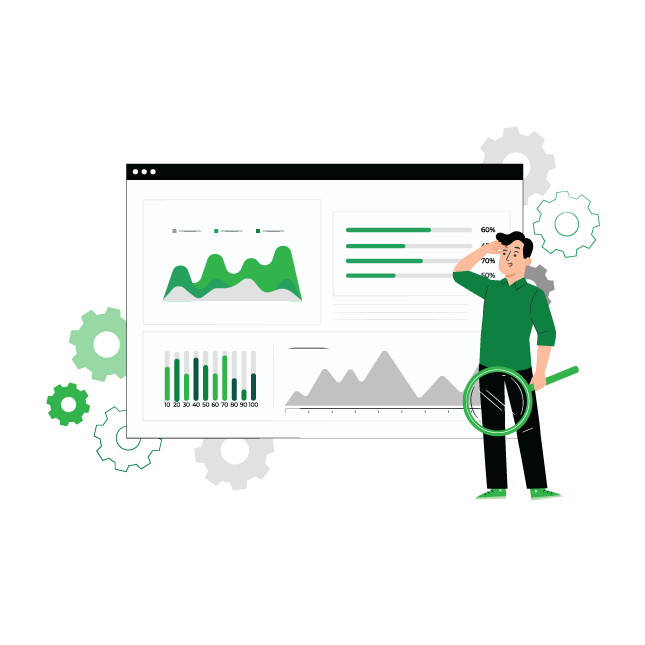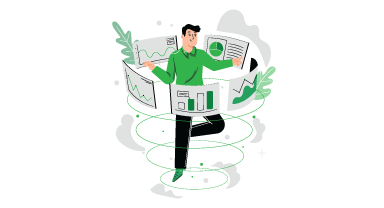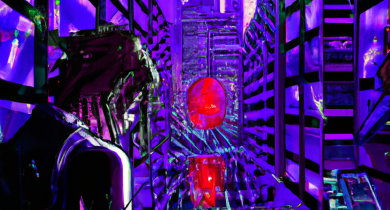
The Fourth Industrial Revolution, also known as Industry 4.0, is a current trend of integrating advanced technologies, such as artificial intelligence and the Internet of Things, into manufacturing and various industries to improve efficiency and productivity.
Industry 4.0 is characterized by the integration of digital and physical technologies, resulting in the creation of “smart factories” and the optimization of supply chain management. This integration also enables the development of new products and services that were previously unimaginable, such as self-driving cars and personalized healthcare.
However, the Fourth Industrial Revolution also presents significant challenges, particularly in the realm of cybersecurity. As we increasingly rely on interconnected systems and devices, the risk of cyber attacks grows. These attacks can have serious consequences for individuals, businesses, and society as a whole, from the theft of sensitive information to the disruption of essential infrastructure.
As the Fourth Industrial Revolution continues to transform industries and shape the future, it is crucial that we address the cybersecurity challenge and find ways to protect ourselves and our systems from potential threats.
The Industrial Revolution refers to a period of rapid industrialization that began in the 18th century and transformed the way goods were produced, leading to significant social and economic changes. There have been four major phases of the Industrial Revolution, each marked by the introduction of new technologies and energy sources that have transformed the way we live and work.
- The First Industrial Revolution, which began in the late 18th century and lasted until the early 19th century, was marked by the development of steam power and the mechanization of manufacturing processes, such as the development of the steam engine and the cotton gin.
- The Second Industrial Revolution, which occurred in the late 19th century, was marked by the development of electricity and the expansion of railroads and telegraphy. This revolution also saw the emergence of new industries, such as the steel industry and the chemical industry.
- The Third Industrial Revolution, also known as the Digital Revolution, began in the late 20th century and is marked by the development of computers and the internet. This revolution has transformed the way we communicate and access information, and has led to the development of new industries, such as the tech industry.
- The Fourth Industrial Revolution, also known as Industry 4.0, is a current trend of integrating advanced technologies, such as artificial intelligence and the Internet of Things, into manufacturing and various industries to improve efficiency and productivity. This transformation is driven by the convergence of emerging technologies, including the internet, mobile devices, big data analytics, and cloud computing, which are disrupting traditional business models and creating new opportunities for innovation.
Each Industrial Revolution has brought about significant technological and societal changes, and the Fourth Industrial Revolution is no exception. It has the potential to transform industries and shape the future, but it also presents significant challenges, particularly in the realm of cybersecurity. As we increasingly rely on interconnected systems and devices, the risk of cyber attacks grows, and it is important that we address this challenge as we move forward.
Industry 4.0, is different from the previous Industrial Revolutions in several ways. One of the main differences is the integration of advanced technologies, such as artificial intelligence and the Internet of Things, into manufacturing and various industries to improve efficiency and productivity. This integration is driven by the convergence of emerging technologies, including the internet, mobile devices, big data analytics, and cloud computing, which are disrupting traditional business models and creating new opportunities for innovation.
Another key difference is the blurring of the lines between the physical and digital worlds. In the Fourth Industrial Revolution, the integration of digital and physical technologies is enabling the creation of “smart factories” and the optimization of supply chain management. This integration also enables the development of new products and services that were previously unimaginable, such as self-driving cars and personalized healthcare.
The Fourth Industrial Revolution is also different in that it has the potential to have a significant impact on the future of humanity and the environment. On the one hand, it has the potential to improve efficiency and productivity, leading to economic growth and improvements in living standards. On the other hand, it also has the potential to create new challenges, such as job displacement and cybersecurity threats. It is important that we consider the potential impacts of the Fourth Industrial Revolution on both humanity and the environment as we move forward.
The Fourth Industrial Revolution integration is driving the development of smart factories, the optimization of supply chain management, the use of artificial intelligence in automating tasks and developing new products and services, and the integration of the Internet of Things in various processes and systems. However, it also presents significant cybersecurity challenges as we increasingly rely on interconnected systems and devices.
Some of the main areas of development in the Fourth Industrial Revolution include:
- Smart factories: The integration of digital and physical technologies is enabling the creation of “smart factories,” where machines and systems are connected and can communicate with each other to optimize production processes. This can improve efficiency, reduce waste, and increase the speed and accuracy of production.
- Supply chain management: The Fourth Industrial Revolution is also transforming supply chain management, with the integration of advanced technologies enabling real-time tracking and optimization of the movement of goods and materials. This can improve efficiency and reduce costs.
- Artificial intelligence: Artificial intelligence (AI) is playing a significant role in the Fourth Industrial Revolution, with the development of machine learning and natural language processing technologies enabling the automation of tasks and the development of new products and services.
- Internet of Things: The Internet of Things (IoT) is the network of physical devices, vehicles, and buildings that are embedded with sensors and connected to the internet, enabling them to communicate and exchange data. The integration of the IoT in the Fourth Industrial Revolution is enabling the development of new products and services, as well as the optimization of various processes and systems.
- Cybersecurity: The increasing reliance on interconnected systems and devices in the Fourth Industrial Revolution presents significant cybersecurity challenges. Cyber attacks can have serious consequences for individuals, businesses, and society as a whole, from the theft of sensitive information to the disruption of essential infrastructure.
As the world transition to the Fourth Industrial Revolution, it is important to explore the prospective future cybersecurity challenges that we may face in a fully transitioned Humanity 4.0, including cyber attacks on critical infrastructure, data breaches and privacy concerns, supply chain vulnerabilities, and job displacement and inequality. It is important that we address these challenges and find ways to navigate them as we move forward in this era of technological advancement.
- Cyber attacks on critical infrastructure: The integration of advanced technologies in Industry 4.0 has the potential to improve the efficiency and reliability of critical infrastructure, such as power grids and transportation systems. However, it also means that these systems are more reliant on interconnected devices and systems, which can be vulnerable to cyber attacks. If these systems were to be compromised, it could have serious consequences for society, such as power outages or disruptions to transportation.
- Data breaches and privacy concerns: The increasing amount of data generated and shared in an Industry 4.0 world means that there is a higher risk of data breaches and the theft of sensitive information. There is also a concern about the potential for the misuse of personal data, as more and more devices and systems are collecting and sharing data about individuals.
- Supply chain vulnerabilities: The integration of advanced technologies in Industry 4.0 has the potential to improve the efficiency and transparency of supply chain management. However, it also means that there are more opportunities for cyber attacks to occur at various points in the supply chain. For example, if a device or system in the supply chain is compromised, it could have consequences for the entire supply chain.
- Job displacement and inequality: The automation and integration of advanced technologies in Industry 4.0 has the potential to improve efficiency and productivity, but it also has the potential to displace jobs and contribute to inequality. It is important to consider the social impacts of Industry 4.0 and find ways to mitigate the negative consequences and ensure that the benefits are shared fairly.
Challenge #1 - Cyber attacks on critical infrastructure
The integration of advanced technologies in these systems has the potential to improve the efficiency and reliability of critical infrastructure, but it also means that they are more reliant on interconnected devices and systems, which can be vulnerable to cyber attacks. If these systems were to be compromised, it could have serious consequences for society, such as power outages or disruptions to transportation.
There are several potential solutions to this challenge. One approach is to improve the cybersecurity of critical infrastructure by implementing strong security measures, such as regularly updating software and firmware, implementing strong passwords and authentication protocols, and conducting regular security assessments. Another approach is to develop resilience measures, such as backup systems and contingency plans, to ensure that critical infrastructure can continue to function in the event of a cyber attack.
Another approach to addressing this challenge is the concept of “cyber immunity,” which refers to the ability of a system or network to withstand and recover from cyber attacks. Cyber immunity is an approach to defending against cyberattacks that tries to mimic the adaptive immune system of humans and animals. It is a system that has the innate ability to detect and respond to cyber threats, including new malicious viruses and malware, while also being able to recognize, isolate and destroy known malicious threats. Cyber immunity works by constantly monitoring and analyzing IT assets for suspicious behavior and can block malicious activity before it has a chance to cause damage.
There are also ongoing efforts to develop international norms and standards for the cybersecurity of critical infrastructure, with organizations such as the United Nations and the International Telecommunication Union working to establish guidelines for the protection of these systems.
There are, however, limitations to these solutions. Implementing strong security measures can be costly and may not be feasible for all organizations. In addition, it can be difficult to anticipate and defend against new and emerging cyber threats, and it is important that we continue to develop and update our security measures to stay ahead of these threats. Finally, there is the challenge of coordinating and cooperation across different sectors and jurisdictions to ensure that critical infrastructure is adequately protected.
Challenge #2 - Data breaches and privacy concerns
The increasing amount of data generated and shared in an Industry 4.0 world means that there is a higher risk of data breaches, and the integration of advanced technologies in various sectors also means that more and more devices and systems are collecting and sharing data about individuals.
There are several potential solutions to this challenge. One approach is to implement strong data protection measures, such as encryption and secure storage, to prevent data breaches and the theft of sensitive information. Another approach is to develop and implement strong privacy policies and regulations, such as the General Data Protection Regulation (GDPR) in the European Union, to ensure that personal data is collected, used, and shared in a responsible and transparent manner.
There are also ongoing efforts to address digital human rights and the risks of digital authoritarianism and global surveillance. Organizations such as the United Nations and the Electronic Frontier Foundation are working to establish guidelines and principles for the protection of digital rights and freedoms, including the right to privacy and the freedom of expression.
There are, however, limitations to these solutions. Implementing strong data protection measures can be costly and may not be feasible for all organizations. In addition, it can be difficult to anticipate and defend against new and emerging cyber threats.
One potential concern is the use of AI for cyber attacks. For example, AI can be used to automate and scale phishing attacks, which are a common method of stealing sensitive information. AI can also be used to identify and exploit vulnerabilities in systems and devices, making it easier for attackers to gain access to sensitive data.
Quantum computers, which are still in the early stages of development, also have the potential to be used for malicious purposes. Quantum computers are much more powerful than classical computers and are capable of performing certain tasks much faster. This means that they have the potential to break commonly used encryption methods, making it easier for attackers to gain access to sensitive data.
Challenge #3 - Supply chain vulnerabilities
The integration of advanced technologies in Industry 4.0 has the potential to improve the efficiency and transparency of supply chain management, but it also means that there are more opportunities for cyber attacks to occur at various points in the supply chain. For example, if a device or system in the supply chain is compromised, it could have consequences for the entire supply chain.
There are several potential solutions to this challenge. One approach is to implement strong security measures at all points in the supply chain, such as regularly updating software and firmware, implementing strong passwords and authentication protocols, and conducting regular security assessments. Another approach is to develop and implement strong supply chain management policies and regulations, such as the Cybersecurity Maturity Model Certification (CMMC) in the United States, to ensure that all parties in the supply chain are held to high standards of cybersecurity.
One tool that can be used to address supply chain vulnerabilities is XRATOR’s Value Chain Risk Scoring (VCRS). VCRS is a method of assessing and ranking the risks associated with different parts of a supply chain, allowing organizations to identify and prioritize areas of risk and take action to mitigate them. VCRS can help organizations to understand the potential consequences of supply chain disruptions and take steps to prevent them.
There are, however, limitations to these solutions. Implementing strong security measures and developing and implementing strong supply chain management policies can be costly and may not be feasible for all organizations. In addition, it can be difficult to anticipate and defend against new and emerging cyber threats, and it is important that we continue to develop and update our security measures to stay ahead of these threats. Finally, there is the challenge of coordinating and cooperation across different sectors and jurisdictions to ensure that supply chains are adequately protected.
Overall, the risk of supply chain vulnerabilities in an Industry 4.0 world is a significant challenge that will require ongoing efforts to address. Tools like VCRS can play a strategic role in identifying and mitigating risks, but it will also require continued efforts to develop and implement strong security measures and supply chain management policies, as well as build resilience and establish international norms and standards.
Challenge #4 - Job displacement and inequality
One of the prospective future challenges in a fully transitioned Industry 4.0 world is the potential for job displacement and inequality as a result of the automation and integration of advanced technologies. The automation of tasks and the development of new products and services through the use of artificial intelligence and other advanced technologies has the potential to improve efficiency and productivity, but it also has the potential to displace jobs and contribute to inequality.
One potential solution to this challenge is the creation of new cybersecurity jobs in the Industry 4.0 world. There is currently a significant skill shortage in cybersecurity, and this shortage is only likely to grow as the world becomes more digitalized. This means that there is a need for more individuals to enter the cybersecurity workforce and to continuously update their skills and knowledge in order to stay current and competitive. The integration of advanced technologies and the reliance on interconnected systems and devices in Industry 4.0 means that there will be a growing demand for cybersecurity professionals to protect against cyber attacks and ensure the security and reliability of systems and devices.
Another approach is to implement policies and programs to support the retraining and upskilling of workers who may be affected by automation and technological change. This could include initiatives such as reskilling programs, vocational training, and education and training subsidies.
There are, however, limitations to this solution. The retraining and upskilling of workers to take on new cybersecurity roles and new robotic roles can be costly and may not be feasible for all individuals. In addition, there is the challenge of coordinating and cooperation across different sectors and jurisdictions to ensure that these initiatives are effective and equitable.
While the creation of new cybersecurity and robotic-related jobs may provide opportunities for individuals, it will also be important to consider the role that retraining and upskilling initiatives can play in addressing the skill shortage and supporting the transition to a more technologically advanced and equitable society.
To stay competitive during and after the fourth industrial revolution, organizations need to start taking steps right now to adapt and prepare for the changes that are taking place. Some of the key actions that organizations can do to stay competitive include:
- Invest in technology and digital skills: One of the key drivers of the fourth industrial revolution is the integration of advanced technologies, such as artificial intelligence and the Internet of Things. Organizations need to invest in the technology and digital skills necessary to take advantage of these technologies and stay competitive.
- Develop a culture of innovation: To stay competitive, organizations need to be able to adapt and respond to changes in the market and the broader business environment. This requires a culture of innovation and a willingness to take risks and try new things.
- Foster collaboration and partnerships: The fourth industrial revolution is characterized by increased interconnectivity and collaboration. Organizations need to build strong partnerships and seek out opportunities to collaborate with other organizations and stakeholders.
- Develop a strong cybersecurity posture: The integration of advanced technologies also brings with it new cybersecurity risks. Organizations need to develop a strong cybersecurity posture to protect against cyber attacks and ensure the security and reliability of their systems and devices.
- Address the potential impacts of automation: The fourth industrial revolution also brings with it the potential for job displacement and inequality as a result of automation. Organizations need to address these potential impacts by developing strategies to support the retraining and upskilling of workers, as well as initiatives to support the transition to new forms of work.
Overall, staying competitive during and after the fourth industrial revolution will require organizations to adapt and respond to the changes taking place and take proactive steps to build the skills, capabilities, and partnerships necessary to thrive in this new environment.
The fourth industrial revolution is a significant transformation that is taking place across various industries and sectors, driven by the integration of advanced technologies such as artificial intelligence, the Internet of Things, and quantum computing. This transformation has the potential to bring significant benefits, including improved efficiency and productivity, as well as new products and services.
However, the fourth industrial revolution also brings with it a range of challenges and risks, including the risk of cyber attacks on critical infrastructure, data breaches and privacy concerns, supply chain vulnerabilities, and job displacement and inequality. These challenges require the development and implementation of strong security measures and policies, as well as ongoing efforts to educate individuals about the risks and ways to protect themselves.
One tool that can be used to address these challenges is XRATOR’s Value Chain Risk Scoring (VCRS), which allows organizations to assess and rank the risks associated with different parts of a supply chain. VCRS can help organizations to identify and prioritize areas of risk and take action to mitigate them.
Overall, the fourth industrial revolution has the potential to bring significant benefits and opportunities, but it also requires careful consideration of the risks and challenges that it presents. Cybersecurity and cyber risk management will be transformed by the fourth industrial revolution, and it will be essential to continue to develop and implement strong security measures and policies to ensure the protection of personal data, the security and reliability of systems and devices, and the resilience of supply chains.







